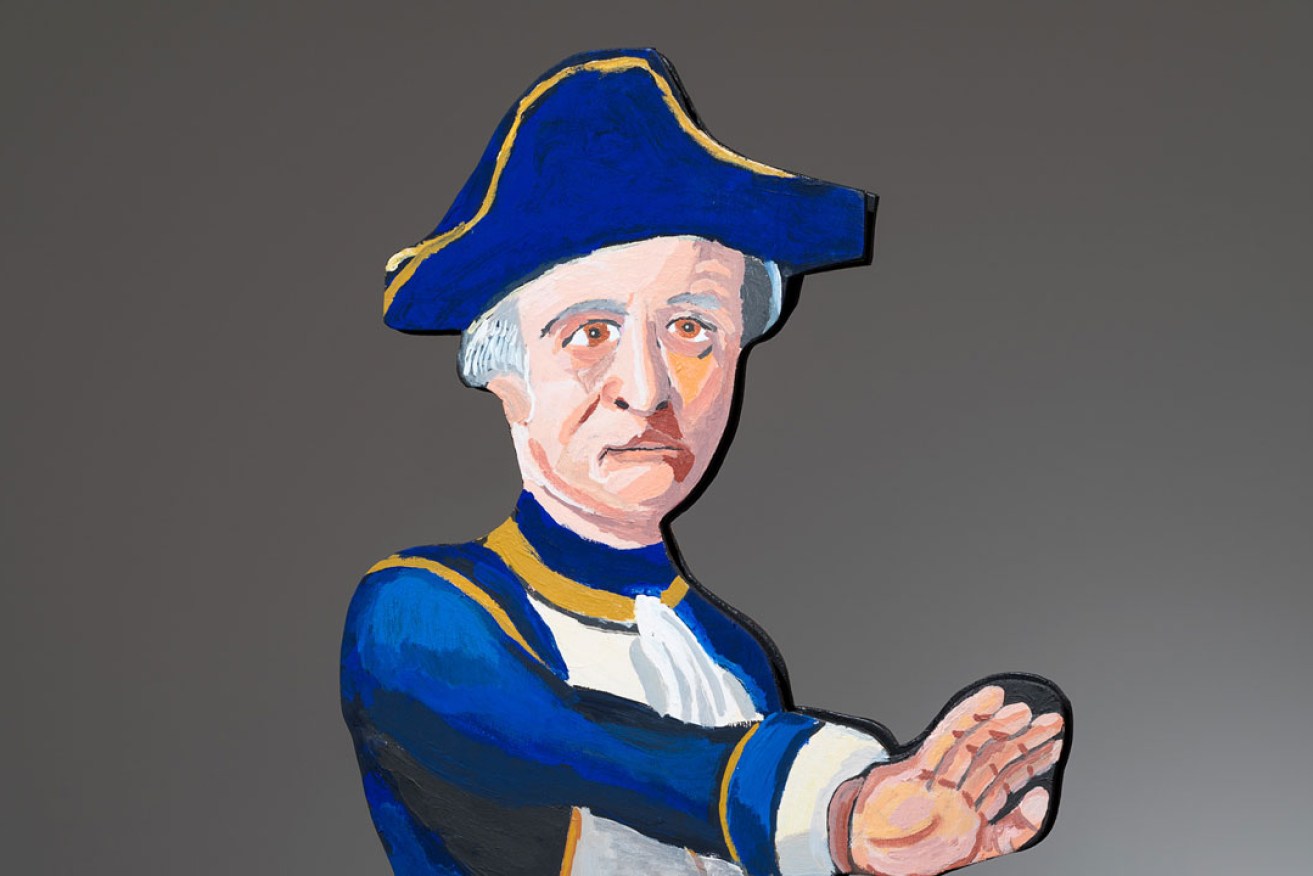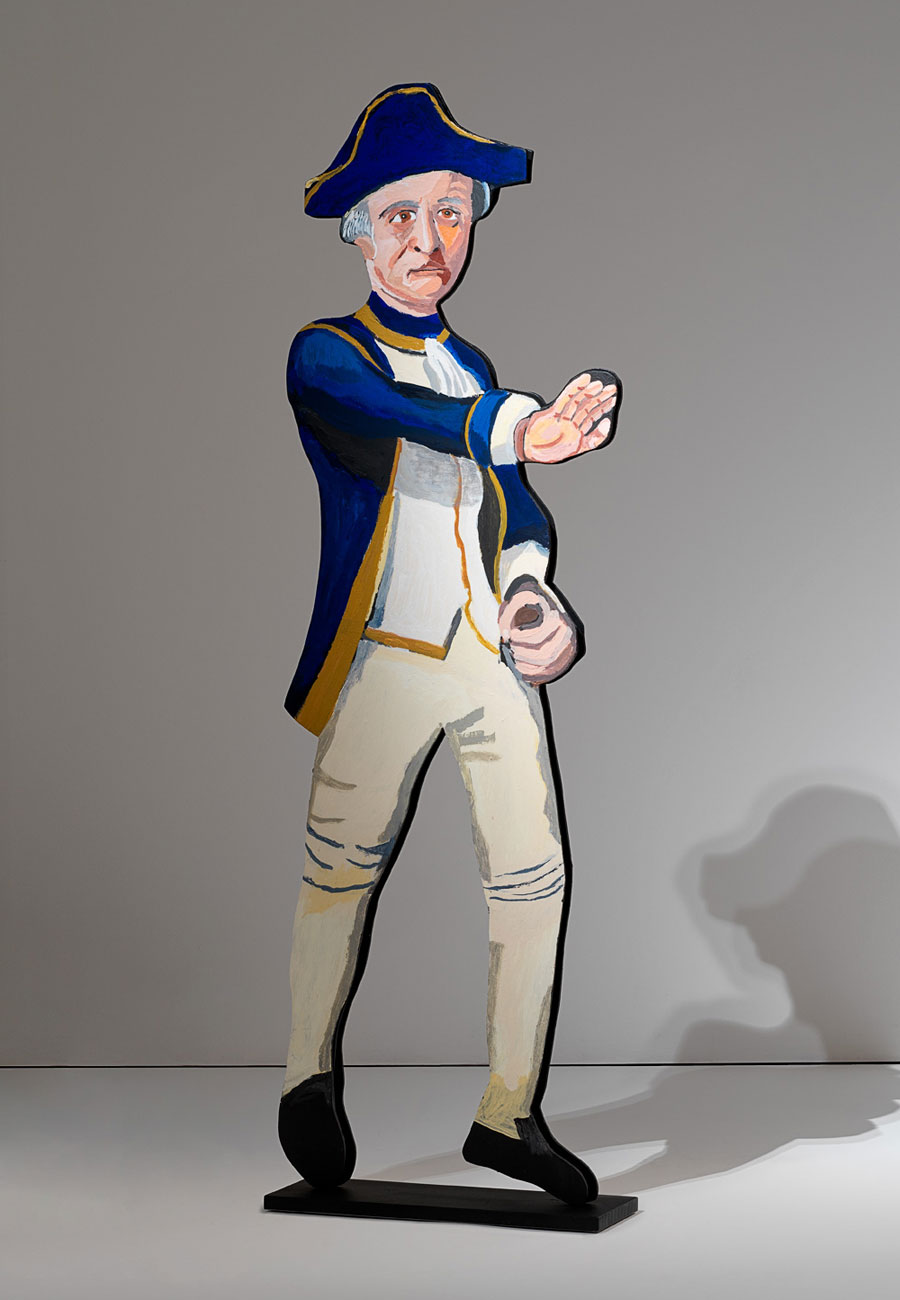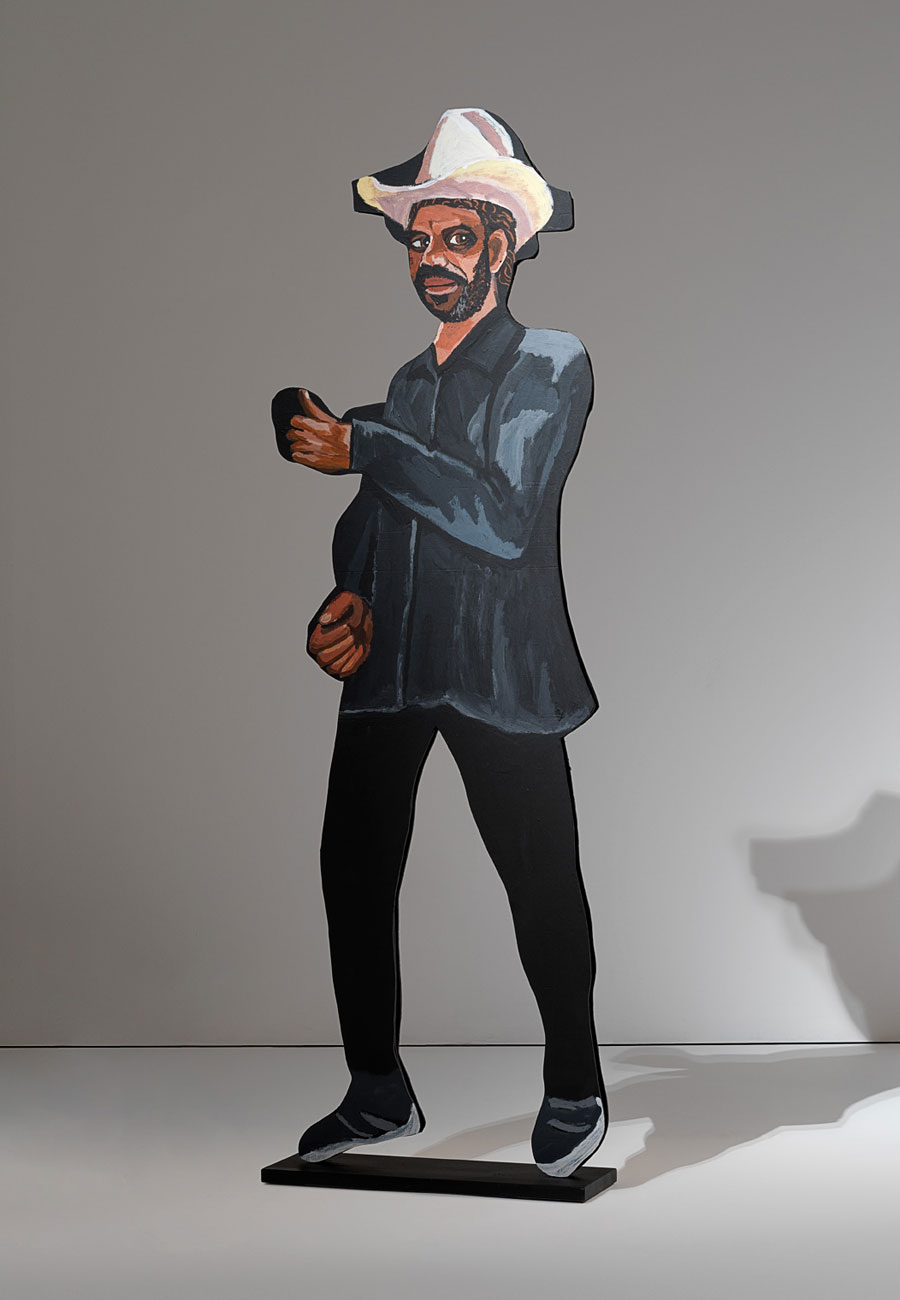Reframing Cook and his legacy through an artist’s lens
As National Reconciliation Week 2020 celebrates the theme In This Together, Art Gallery of SA assistant director Lisa Slade highlights a contemporary artwork that says with paint what seems so difficult to say with words.

Vincent Namatjira's Close Contact (detail). Photo: Grant Hancock
After 250 years, is it possible to reconcile our nation’s conflicting understandings of Lieutenant James Cook? And do we even need to?
Perhaps reconciliation lies in the acceptance that our history elicits conflicting reactions and emotions. It is possible that Cook was a gifted navigator AND an active agent in the colonisation of Terra Australis that wrought devastation for this country’s first people.
This ambivalence need not be seen in negative terms. Unlike ambiguity, which signals uncertainty, and with which ambivalence is often confused, ambivalence makes it possible to hold two seemingly opposing ideas at the same time. Ambivalence is the state of reconciling that things are complex and even, at times, double-sided.
Cook’s own diary entry from April 30, 1770, written in a journal held in the National Library of Australia, states that “it was to no purpose, all they (the Aboriginal people) seem’d to want was for us to be gone”. This suggests that while Cook was acting on British orders to lay claim to Terra Australis Incognita, he also recognised, almost immediately, the unwanted impacts of British advances.

Vincent Namatjira, Western Arrernte people, NT – Close Contact, 2018, Indulkana, SA, synthetic polymer paint on plywood, 188.0 x 62.0 x 3.5cm. Gift of the James & Diana Ramsay Foundation for the Ramsay Art Prize 2019, Art Gallery of SA. Photo: Grant Hancock
Cook’s “boating party” holds some clues to his world view and also invites a rethink of the contact mythologies that we’ve all been taught. It could be argued that his most significant companion on the Endeavour’s voyage was not explorer and naturalist Joseph Banks, but Tupaia. A Polynesian navigator and spiritual leader, Tupaia joined Cook’s voyage in Tahiti in July 1769 and played an instrumental role in the journey as navigator, diplomat and interpreter, until his premature death in Batavia (now Jakarta, Indonesia) while en route to Britain on November 11, 1770.
Tupaia was also an artist. In fact, it is likely that he was the first non-Aboriginal artist to depict Australia’s east coast (a title often bestowed on Sydney Parkinson).
In late April 1770, Tupaia made a drawing showing three Eora people fishing from a bark canoe in Sydney’s waters. This precious rendering of Aboriginal knowledge is a claim to Country that reveals the lie of terra nullius. (Look closely at Tupaia’s sketch to see the outline of the blue groper freshly speared in Cadigal waters.)
Held today in the National Library in London, Tupaia’s drawing is one of several that chronicles his voyage and provides a portal, one that is not the eye of empire, into early colonial contact.
At the time of Cook’s landing, the ancestors of Vincent Namatjira had for millennia been sovereign custodians of Country in what we now call Central Australia.
Namatjira needs little introduction; his last name is a name that was spoken in broad Australia for much of last century. Vincent is the great-grandson of Albert and lives in the Aboriginal community of Indulkana on the Aṉangu Pitjantjatjara Yankunytjatjara Lands of far-north South Australia. Last year at the Art Gallery of South Australia, Vincent won the Ramsay Art Prize, one of Australia’s most generous art prizes, with his double-sided work of art titled Close Contact.

Vincent Namatjira, Western Arrernte people, NT – Close Contact, 2018, Indulkana, SA, synthetic polymer paint on plywood, 188.0 x 62.0 x 3.5cm. Gift of the James & Diana Ramsay Foundation for the Ramsay Art Prize 2019, Art Gallery of SA. Photo: Grant Hancock
With a self-portrait on one side (complete with self-assured thumbs-up swagger) and a portrait of Cook on the other (based on the painting by Emanuel Phillips Fox called Landing of Captain Cook at Botany Bay, 1770), Close Contact speaks to a history where we are in this together, to quote this year’s National Reconciliation Week theme. Cook and Namatjira are shoulder to shoulder and, with this deft move, Namatjira says with paint what seems so difficult to say with words.
Close Contact – which, as the Ramsay Art Prize winner, has entered the Art Gallery of South Australia collection – is now a star inclusion in an exhibition at Flinders University Museum of Art, curated by Dr Ali Gumillya Baker and Fiona Salmon. Titled In the hold: Decolonising Cook in contemporary Australian art, the exhibition reframes Cook and his legacy through the lens of contemporary Australian artists.
No matter how we perceive Cook, whether hero or villain, he personifies a national conundrum. Our history remains unambiguously ambivalent, forever offering obverse and reverse renderings of a double-sided vision of our shared past. Regardless of which view we favour, however, we are all looking at the same picture.
Dr Lisa Slade is assistant director of the Art Gallery of South Australia.
National Reconciliation Week runs from May 27 until June 3. In the hold: Decolonising Cook in contemporary Australian art is currently on display at Flinders University Museum of Art, Flinders University, Bedford Park.
The Art Gallery of SA will reopen to the public on June 5.




